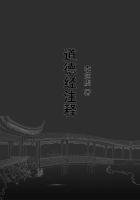Thus while it is necessary for the female to provide a body and a material mass, it is not necessary for the male, because it is not within the work of art or the embryo that the tools or the maker must exist.While the body is from the female, it is the soul that is from the male, for the soul is the reality of a particular body.
For this reason if animals of a different kind are crossed (and this is possible when the periods of gestation are equal and conception takes place nearly at the same season and there is no great difference in the of the animals), the first cross has a common resemblance to both parents, as the hybrid between fox and dog, partridge and domestic fowl, but as time goes on and one generation springs from another, the final result resembles the female in form, just as foreign seeds produce plants varying in accordance with the country in which they are sown.For it is the soil that gives to the seeds the material and the body of the plant.And hence the part of the female which receives the semen is not a mere passage, but the uterus has a considerable width, whereas the males that emit semen have only passages for this purpose, and these are bloodless.
Each of the secretions becomes such at the moment when it is in its proper place; before that there is nothing of the sort unless with much violence and contrary to nature.
We have thus stated the reason for which the generative secretions are formed in animals.But when the semen from the male (in those animals which emit semen) has entered, it puts into form the purest part of the female secretion (for the greater part of the catamenia also is useless and fluid, as is the most fluid part of the male secretion, i.e.in a single emission, the earlier discharge being in most cases apt to be infertile rather than the later, having less vital heat through want of concoction, whereas that which is concocted is thick and of a more material nature).
If there is no external discharge, either in women or other animals, on account of there not being much useless and superfluous matter in the secretion, then the quantity forming within the female altogether is as much as what is retained within those animals which have an external discharge; this is put into form by the power of the male residing in the semen secreted by him, or, as is clearly seen to happen in some insects, by the part in the female analogous to the uterus being inserted into the male.
It has been previously stated that the discharge accompanying sexual pleasure in the female contributes nothing to the embryo.The chief argument for the opposite view is that what are called bad dreams occur by night with women as with men; but this is no proof, for the same thing happens to young men also who do not yet emit semen, and to those who do emit semen but whose semen is infertile.
It is impossible to conceive without the emission of the male in union and without the secretion of the corresponding female material, whether it be discharged externally or whether there is only enough within the body.Women conceive, however, without experiencing the pleasure usual in such intercourse, if the part chance to be in heat and the uterus to have descended.But generally speaking the opposite is the case, because the os uteri is not closed when the discharge takes place which is usually accompanied by pleasure in women as well as men, and when this is so there is a readier way for the semen of the male to be drawn into the uterus.
The actual discharge does not take place within the uterus as some think, the os uteri being too narrow, but it is in the region in front of this, where the female discharges the moisture found in some cases, that the male emits the semen.Sometimes it remains in this place;at other times, if the uterus chance to be conveniently placed and hot on account of the purgation of the catamenia, it draws it within itself.A proof of this is that pessaries, though wet when applied, are removed dry.Moreover, in all those animals which have the uterus near the hypozoma, as birds and viviparous fishes, it is impossible that the semen should be so discharged as to enter it; it must be drawn into it.This region, on account of the heat which is in it, attracts the semen.The discharge and collection of the catamenia also excite heat in this part.Hence it acts like cone-shaped vessels which, when they have been washed out with hot water, their mouth being turned downwards, draw water into themselves.
And this is the way things are drawn up, but some say that nothing of the kind happens with the organic parts concerned in copulation.
Precisely the opposite is the case of those who say the woman emits semen as well as the man, for if she emits it outside the uterus this must then draw it back again into itself if it is to be mixed with the semen of the male.But this is a superfluous proceeding, and Nature does nothing superfluous.
When the material secreted by the female in the uterus has been fixed by the semen of the male (this acts in the same way as rennet acts upon milk, for rennet is a kind of milk containing vital heat, which brings into one mass and fixes the similar material, and the relation of the semen to the catamenia is the same, milk and the catamenia being of the same nature)- when, I say, the more solid part comes together, the liquid is separated off from it, and as the earthy parts solidify membranes form all round it; this is both a necessary result and for a final cause, the former because the surface of a mass must solidify on heating as well as on cooling, the latter because the foetus must not be in a liquid but be separated from it.
Some of these are called membranes and others choria, the difference being one of more or less, and they exist in ovipara and vivipara alike.
When the embryo is once formed, it acts like the seeds of plants.















